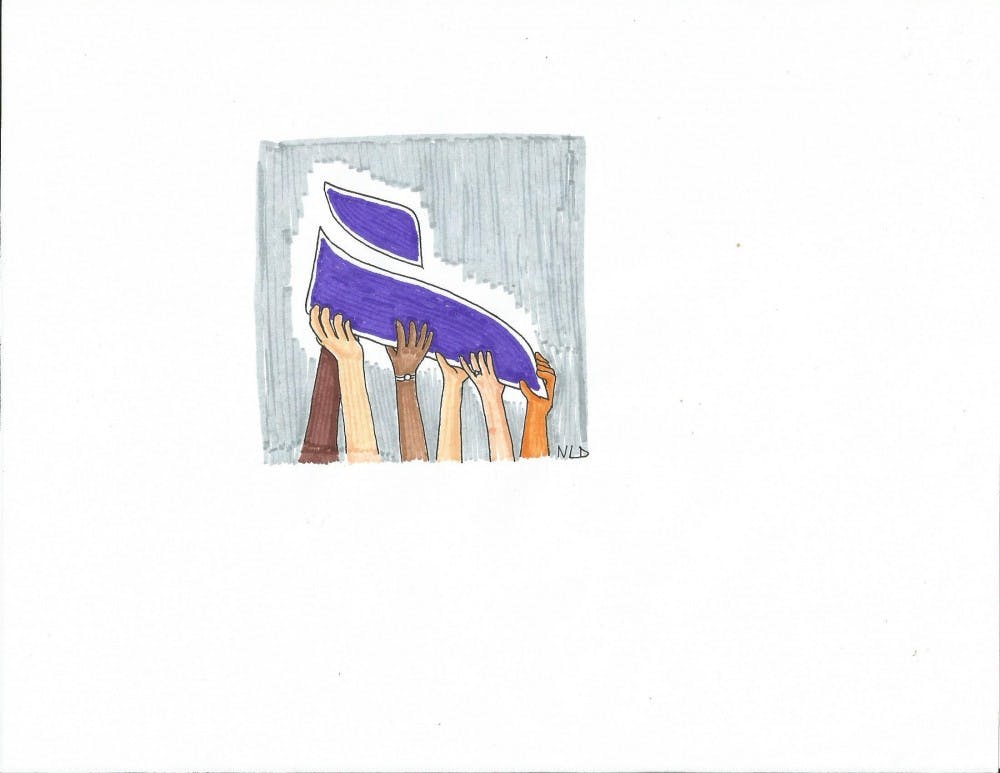Look at our leadership cabinet at UP: Fr. Mark Poorman, Thomas Greene, Laurie Kelley, Fr. Gerard J. Olinger, James B. Ravelli, Alan P. Timmins, Danielle E. Hermanny, Scott Leykam and J. Bryce Strang.
How many women do you see?
Two.
Only two out of nine administrators. That’s barely 20 percent. Yet, women make up 59 percent of the student body.
Furthermore, only one of those women, Kelley, is at the vice presidential level, the inner circle of power at UP.
Moreover, with one scan of the polished profiles of these administrators, it’s impossible to miss that the majority are white faces smiling back at you.
We don’t blame the current leadership for the overwhelming majority of white males that populate the current upper administration. But we do want to challenge our white male leaders to bring in diversity — because now is the perfect time.
Last week university president, Fr. Mark Poorman, announced that Laurie Kelley, VP for university relations, was leaving The Bluff to take a new position with Providence Foundations as president and chief development officer. As Kelley leaves, Fr. Gerry Olinger will take her old position and Fr. John Donato will take Olinger’s position.
UP has posted the position for associate vice president for student development. As administrators begin the process for filling Donato’s old position, we hope they will deliberately seek diversity.
The administration could make intentional efforts to incorporate more diversity — diversity that would reflect the composition of our beautiful student body and diversity that would improve our institution in the long run.
There are qualified women, people of color and lay people — don’t overlook them. Find them. Hire them.
Countless studies have shown that diversity makes institutions more successful in many ways.
According to a study by business professors Cristian Deszö (University of Maryland) and David Ross (Columbia University), having women in top management led to an increase in firm value of about $42 million on average. In a study by professor of management Orlando Richard (University of Texas, Dallas), researchers found that for innovation-focused banks, increasing racial diversity was connected to increased financial performance.
But even more than money, diverse institutions are better innovators, problem-solvers and critical thinkers.
According to a study by professor of management and organizations Katherine Phillips (Kellogg School of Management at Northwestern University), groups with at least one diverse team member perform better than groups without diversity — because they demonstrate better decision making, increased innovative thinking, and improved effectiveness.
Intentionally incorporating more diversity into upper administration would demonstrate that the University is committed to innovation and excellence. But more than that, it would show students that the University cares about their concerns.
Because we are concerned.
We are concerned that an administration that is too homogenous would overlook the concerns of a more diverse student and staff population.
Without diversity, administrators may unintentionally ignore or forget about the unique, ever-changing concerns of a Latina athlete, a black male business major or a white agender freshman. We can’t pretend to know or understand the complexities of every human experience, which is why we need to bring more diversity into administration — so we have as much breadth and depth of understanding as possible.
We hope for a day when the fourth floor of Waldschmidt is filled with various identities: black, white, Japanese-American, male, female, gender non-conforming, gay, straight, bisexual, lay and ordained. Someday, we hope the leaders of our university will look more like us, live more like us, and love more like us: Diversely.








